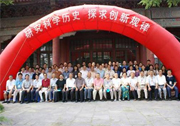| 英文摘要: |
Cattle epidemics,which was acute cattle plague, cattle bovine mange, cattle yellow fever, cattle rotten hoof disease and others, brought a serious impact on the Han and Tang society. As cattle was very critical for agriculture in ancient China, most social strata in the Han and Tang Dynasties issued policies to protect cattle from epidemics. These policies could be concluded by “prevention before sicken” and “contagion protection after sicken”. Moreover, some primary measures of medicine and economy were issued by the government, physician, agriculturists, astrology scientist, Taoist and others. Firstly, Bureau of Livestock assigned veterinarians to make diagnosis and give treatments, distributed medical drugs and prescriptions, regulated rules of pasturage. Secondly, laws were modified to allow the farm cattle business. Thirdly, new farm implements were extended to prevent missing the opportunity of cultivation. The forth was to strengthen the financial subventions. These measures, to some extent, not only promoted the improvement of government assistance functions, the changes of agricultural practices, the birth of new farm implements, but also become the main driving force of technological innovation in agriculture. |





